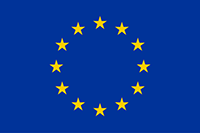I am looking for information as
Researcher

Industry

Patient

BBMRI.sk
Slovakia (Member)
Contact:
Zuzana Danková, Assoc. Prof. RNDr. PhD. (National Node Director)
Website: coming soon
Socials: coming soon
The National Node was established following the accession of the Slovak Republic to BBMRI-ERIC in June 2025. Its mission is to connect Slovak biobanks and research institutions to support innovative research, improve public health, and ensure the high-quality and ethical use of biological samples and data.
The founding members comprise leading research institutions and hospitals representing all geographical regions of Slovakia:
1. Jessenius Faculty of Medicine in Martin, Comenius University in Bratislava
The Jessenius Faculty of Medicine hosts the BBMRI.sk National Node and operates a national biobank equipped with state-of-the-art storage technology and large-capacity depositories https://biobankslovakia.jlfuk.sk/en/biobankslovakia_en/ . It was established as one of the principal outcomes of the first national biobanking program carried out by the faculty between 2020 and 2025. The Biobank closely cooperates with the Martin University Hospital, primarily storing samples related to breast, lung and colorectal cancers.
In collaboration with the Biomedical Centre Martin, the faculty provides a full spectrum of analytical services, including NGS sequencing, metabolomics, proteomics, and other advanced molecular analyses.
2. Faculty of Medicine, Comenius University in Bratislava
The Faculty of Medicine in Bratislava is an integral partner of the Slovak national biobanking initiative, contributing to the development of a systemic public research infrastructure for the standardized collection of human biological samples.
Its key departments and research centers, such as the Institute of Molecular Biomedicine (IMBM), focus on translational research and molecular diagnostics, supporting studies on complex diseases including autoimmune and neurodevelopmental disorders.
3. National Cancer Institute, Bratislava
The biobank of the National Cancer Institute is project-oriented and features detailed sample annotation.
It stores various biological sample types, primarily from testicular germ cell tumors, breast cancer, pancreatic cancer, colorectal cancer, malignant lymphoma, and urothelial cancer.
The Institute actively collaborates with research institutions and universities in Italy, the Netherlands, Portugal, and the United States.
4. F. D. Roosevelt University Hospital with Polyclinic, Banská Bystrica (FNsP BB)
This biobank focuses on the full spectrum of liver diseases, liver transplantation, and the gut microbiome. It maintains thousands of clinically well-phenotyped patients with advanced chronic liver disease (ACLD), as well as a comprehensive database of individuals enrolled in a national liver disease screening program in Slovakia.
The hospital also participates in several international research consortia, including Liverscreen, LiverAim, and GlobalAlcHep.
5. Biomedical Research Center of the Slovak Academy of Sciences, Bratislava
Biomedical Research Center of the Slovak Academy of Sciences (BMC SAS) is the largest Slovak institution devoted to basic and applied research in biomedical sciences. Its DIABGENE Biobank is dedicated to the research of rare diseases with focus on monogenic diabetes, congenital hyperinsulinism, monogenic obesity, primary mitochondriopathies and sensorineural hearing loss. The research is conducted in close cooperation with National Institute of Children Diseases, University Hospital and Medical Faculty of Comenius University in Bratislava, Slovakia and outpatients’ endocrinologists, diabetologists, pediatricians, neonatologists, otorhinolaryngologists throughout whole Slovakia.
6. L. Pasteur University Hospital, Košice (UNLP KE)
Located within Slovakia’s second-largest hospital, which includes 45 clinical departments, this biobank is part of the Joint Tissue Bank—a specialized unit that has been collecting, processing, and distributing tissues for therapeutic use for nearly 30 years.
The research biobank holds an extensive collection of samples related to respiratory diseases, sexually transmitted infections, and neurological disorders.









